A Modest Proposal
I’m going to propose something based on a lot of circumstantial evidence – fully admitting that I don’t know the fact of it.
It is widely accepted that European (and British and North American) black glass wine bottles went through a very well-documented transition between about 1620 and the mid-1800s. I speak of the transition from shaft and globes, through onions, then mallets, on to squat cylinders and finishing with the standard cylinders we have today.
Above, you see the transitions, and in much published research, you can read all of the reasons accompanying these transitions.
What I’d like to propose is that, although the shapes differ (all of the late Persian wine bottle shapes are flat-sided), that Persia offered the same set of transitions, roughly shown below:
 PC-002 PC-002 |
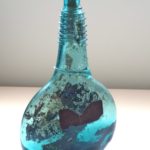 PC-078 PC-078 |
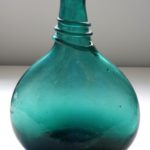 PC-114 PC-114 |
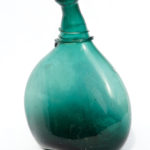 PC-045 PC-045 |
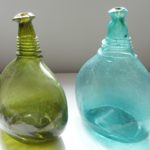 |
| Type I | Type II | Type III | Type IV | Type V |
Saddle Flask – Type I (Banjo-style) (c. 1620-1675)
Type I Saddle flasks may be the earliest known bottles in this style, and the earliest examples may date from the 1600s. They are flattened, have extensive string wrapped clockwise around the neck (15 to 20+ turns), and a solid pontil at the base. My suggestion for the early age of these bottles comes from two sources: first, 17th-century architecture in Persia contained bottle-shaped cut-outs that were the shape of these bottles; and second, 17th-century art in Persia (Isfahan in particular) contains imagery of clear glass bottles with liquid that approximate this shape. Arguably the type might have been made continuously for several hundred years, but the lip, neck and base finish, as well as the quality of the glass, is quite consistent across all examples in my collection.
Both these and the Type I decanters come in a rich variety of colours, and many of these are very pure (clean) specimens. I’ve yet to determine whether this is because the same form was produced for 200 years, or whether it was because this style of bottle was typically very well protected. I have seen several at auction in the UK that obviously had been in the ground; they were all (three examples) of a pale aqua, not unsimilar to PC-002.
Note: There are striking similarities between the Type I Saddle Flasks and the Spiral-Bound Rose Water Sprinklers.
Saddle Flask – Type II (Queen Anne Style) (c. 1675-1725)
In 1708, a very famous saddle flask (PC-078, below) was given to Queen Anne by a Persian Ambassador while on a state tour. This is, to my knowledge, the only dateable saddle flask, and it helps define what comes before and after. Before, I would suggest, are bottles like PC-006 – with extensive thin stringing like the Type I Saddles (above), but transitioning towards progressively chunkier stringing, as well as (necessarily) fewer turns. There are fewer colour differences in the glass, and the body shape changes gradually towards the latest version of the form (Type IV, below). Note that most of the Type II Saddle Flasks have a restricted upper neck portion – as though the neck were held in a clamp while the lip was being finished, perhaps.
Saddle Flasks – Type III (V-tooled lip) (c. 1725-1800)
I have found there to be at least two substantially different forms of the later saddle flask. There is one with a thick v-tooled lip, and the other with a funnel lip. The v-tooled lip seems more similar to the Type Two Saddle Flasks, so I would suggest that these flasks pre-date the type IV Saddle Flasks which have a definite funnel lip.
Some of the Type III Saddle Flasks have lips that are heavily worked, others not so much or not at all. Most of the Type III Saddles have very similar coloration – the dark green that is indeed known as “Persian green” by some.
The highlight of the collection is likely a Type III Saddle with what looks like a “Z” (but of course is not) fashioned out of the stringing (PC-161). Many saddles still to post!
Saddle Flasks – Type IV (Funnel Lip) (c. 1800-1925)
This categorization came about as I assessed the many saddles on my shelves. The simplest discernable difference between the common saddles is the lip finish. These Type IV Saddle Flasks, which I conjecture are later than the Type III Saddles with the v-tooled lips, come in a greater variety of glass colours.
Saddle Flasks – Type V (c. 1925-current day)
Here’s a group that I once thought were fake, but now am far more inclined to see as authentic. You can read the story here. They are likely bottles that are exciting when you see them on a table or worse, on eBay. God knows, several of them excited me in photos, and at least one excited another seasoned collector, who sold it to me as old. I have read repeatedly that the glassmakers in Isfahan used only remelted glass, that their work was shoddy…so someone could make the argument that these bottles were made in Isfahan. But there is no basal wear, there is no usage wear, there is no internal haze or content stain…and some of the openings aren’t even close to round. I’ve no idea how they would have held a cork. Most of the bodies are swollen wide, as well – very bulbous. So they really seem like they should be fakes.
But I have four bottles in my collection that are wrapped in wicker – one that came from a collection that was built in Isfahan. And they are of this style of glass. And the ones in the wicker have age, have content stain, “make sense”. An Iranian scholar studying in India told me that these bottles are still used in rural villages in Iran to this day. So my conclusion: they are not old, but they are Persian, they are saddle flasks, and they were intended for use.
Photo 10 has three bottles with gently sloped lips – and no internal ledge. The glass stringing is round, not flattened, and does not have the discernable “teardrop” start point where the initial piece of glass was adhered on the original Saddle Flasks. And again, they are pristine, mint. I have seen others like them. I might be inclined to call these ones out as fakes…but given the previous nine photos, it’s really hard to be sure. They are 20th century production – perhaps they are simply a finer quality product that was intended for use?
Saddle Flasks – Type V – Photo 10
Saddle Flasks – Type V – Photo 9
Saddle Flasks – Type V – Photo 8
Saddle Flasks – Type V – Photo 7
Saddle Flasks – Type V – Photo 6
Saddle Flasks – Type V – Photo 5
Saddle Flasks – Type V – Photo 4
Saddle Flasks – Type V – Photo 3
Saddle Flasks – Type V – Photo 2
Saddle Flasks – Type V – Photo 1
Uncatalogued Variants
And in every collection, there are those bottles that fit the mould – somewhat – but that you simply haven’t figured out. These are those, when it comes to Saddle Flasks.
Saddle-style Decanters
Although they are shaped like saddle flasks, these bottles seem either too fine (thinness of glass) or too fancy to have been used as anything other than serving bottles at the dining room table. Just conjecture, of course.

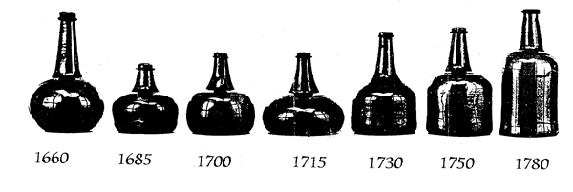
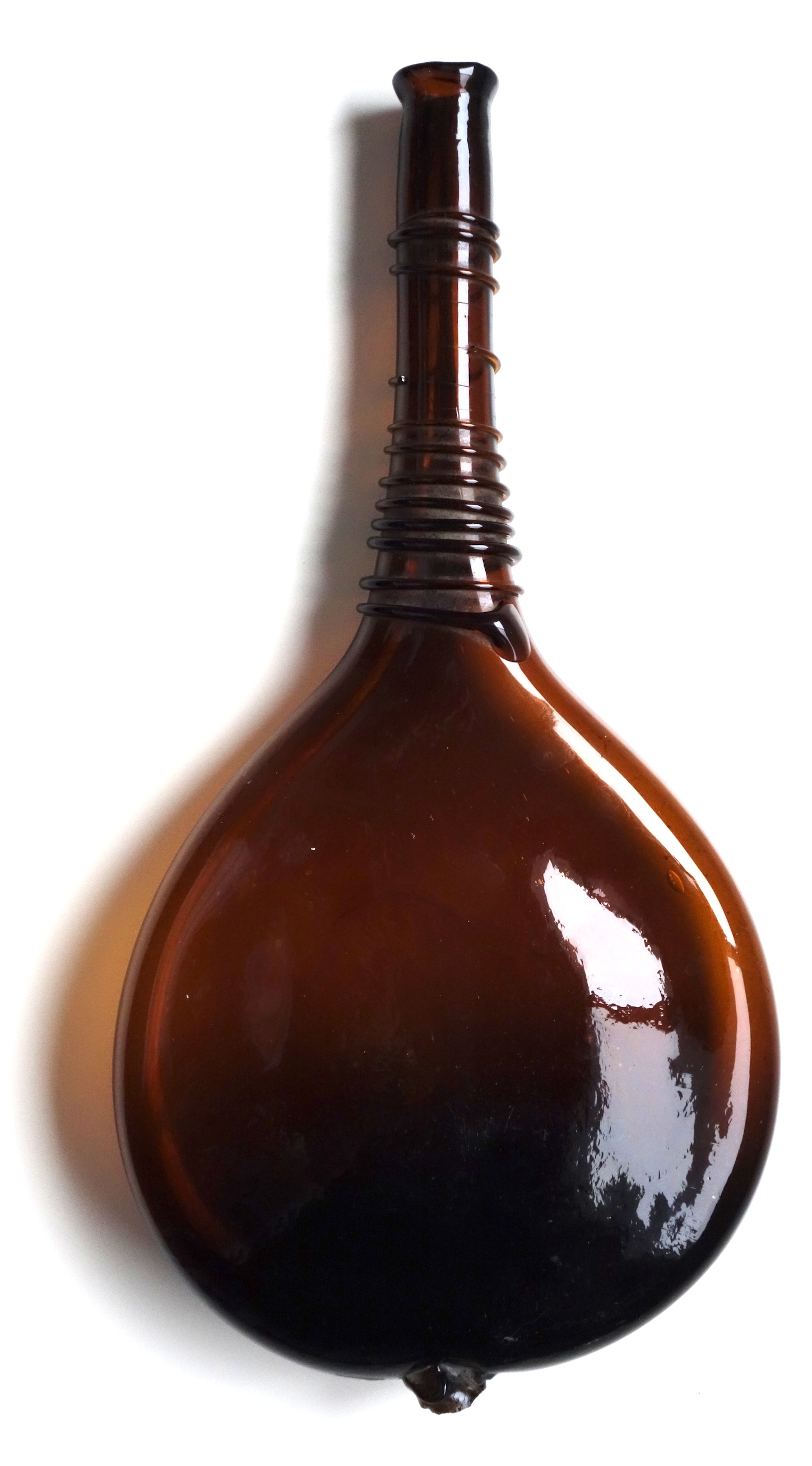
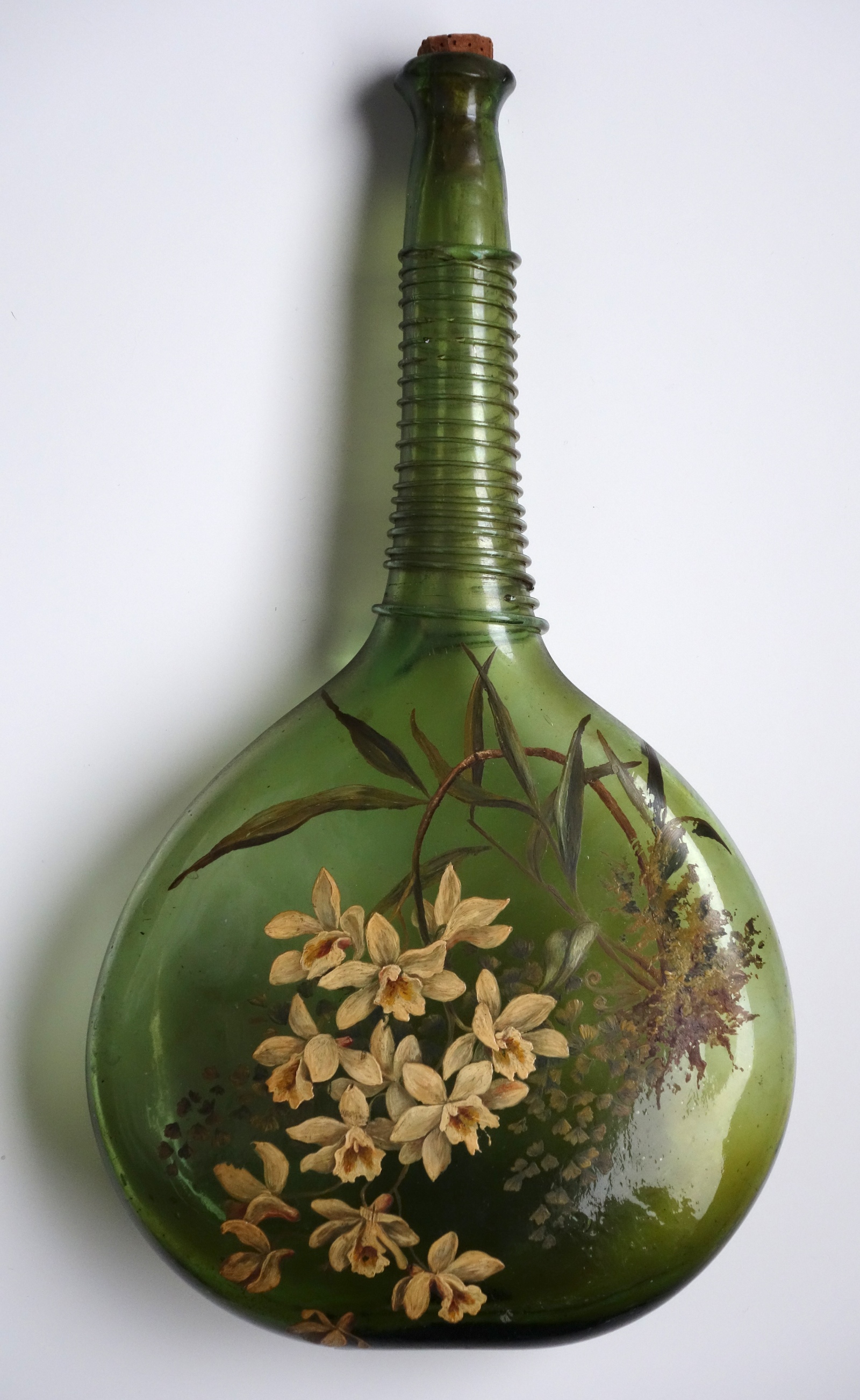



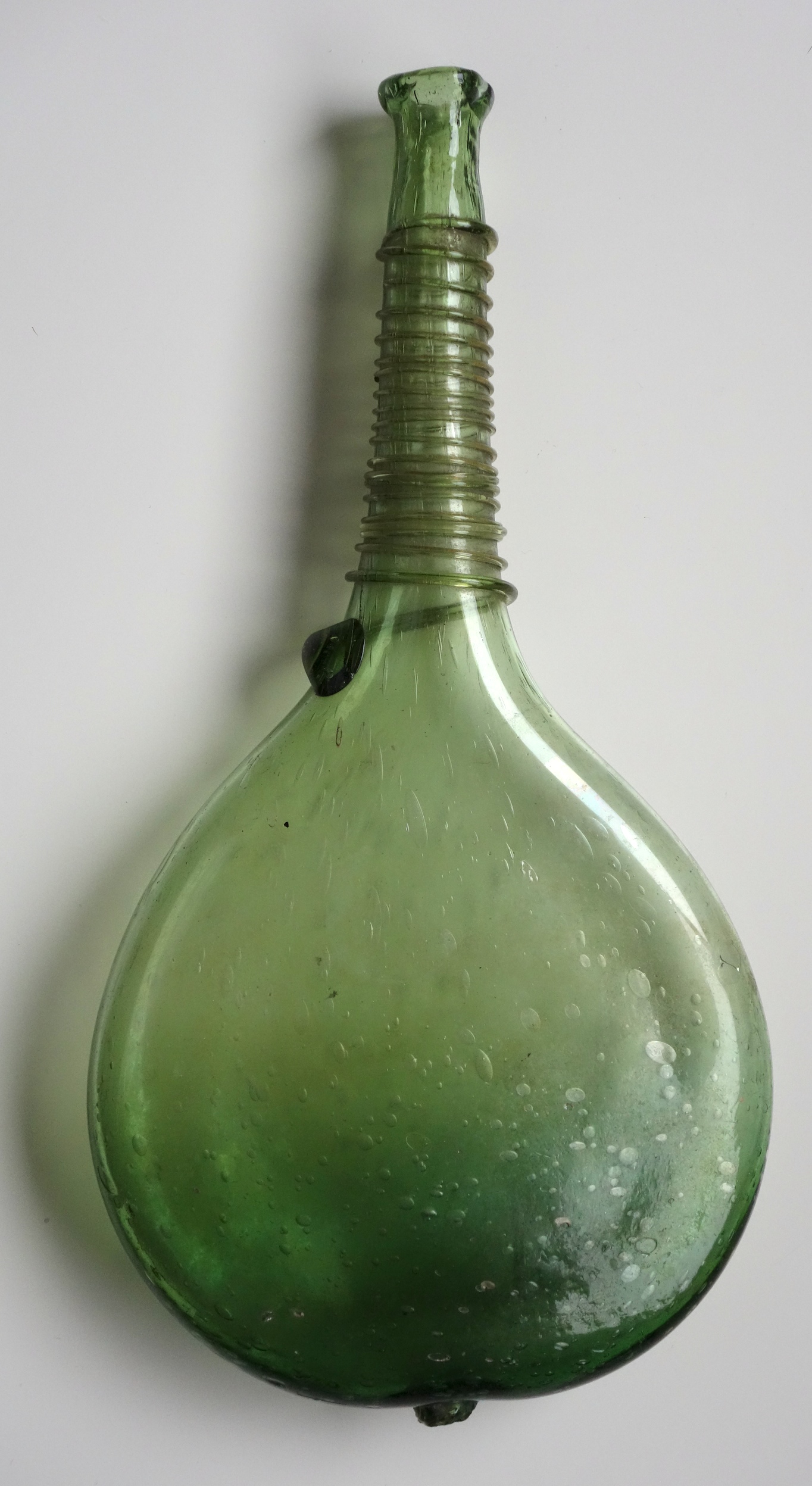
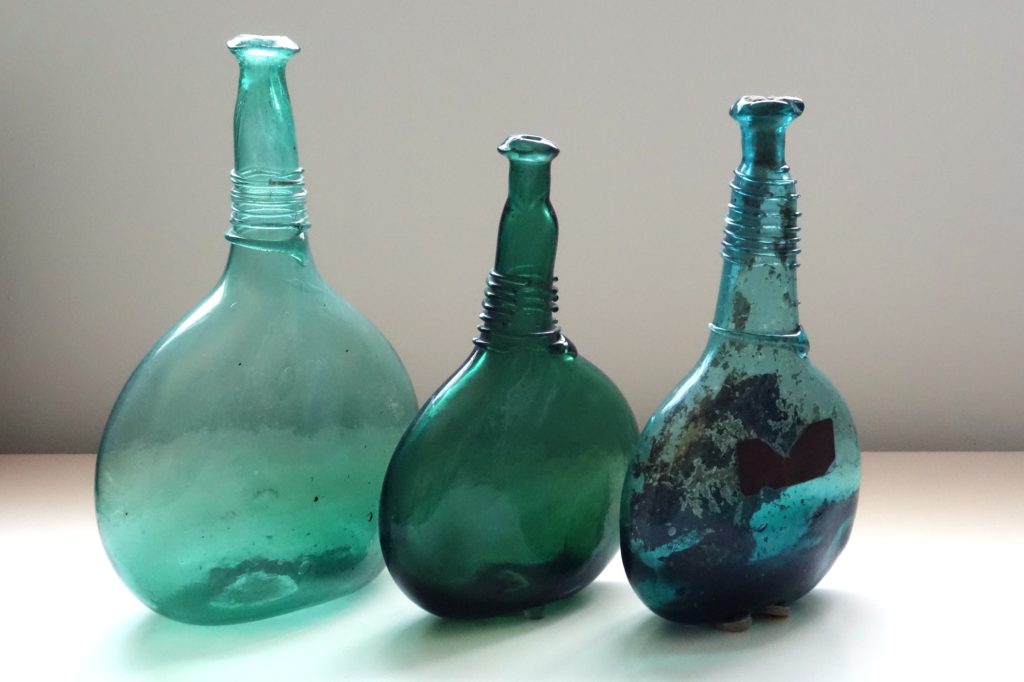
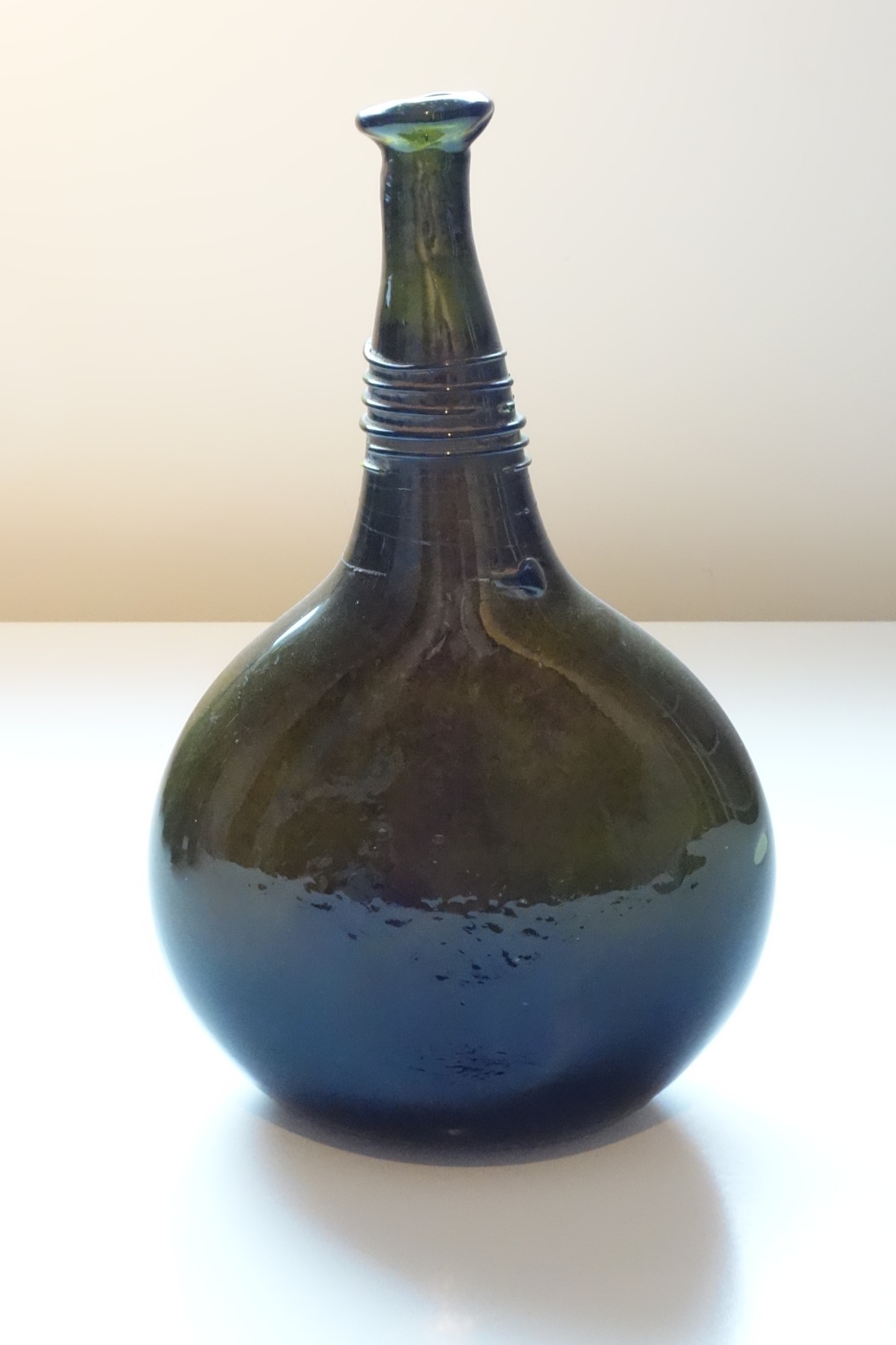
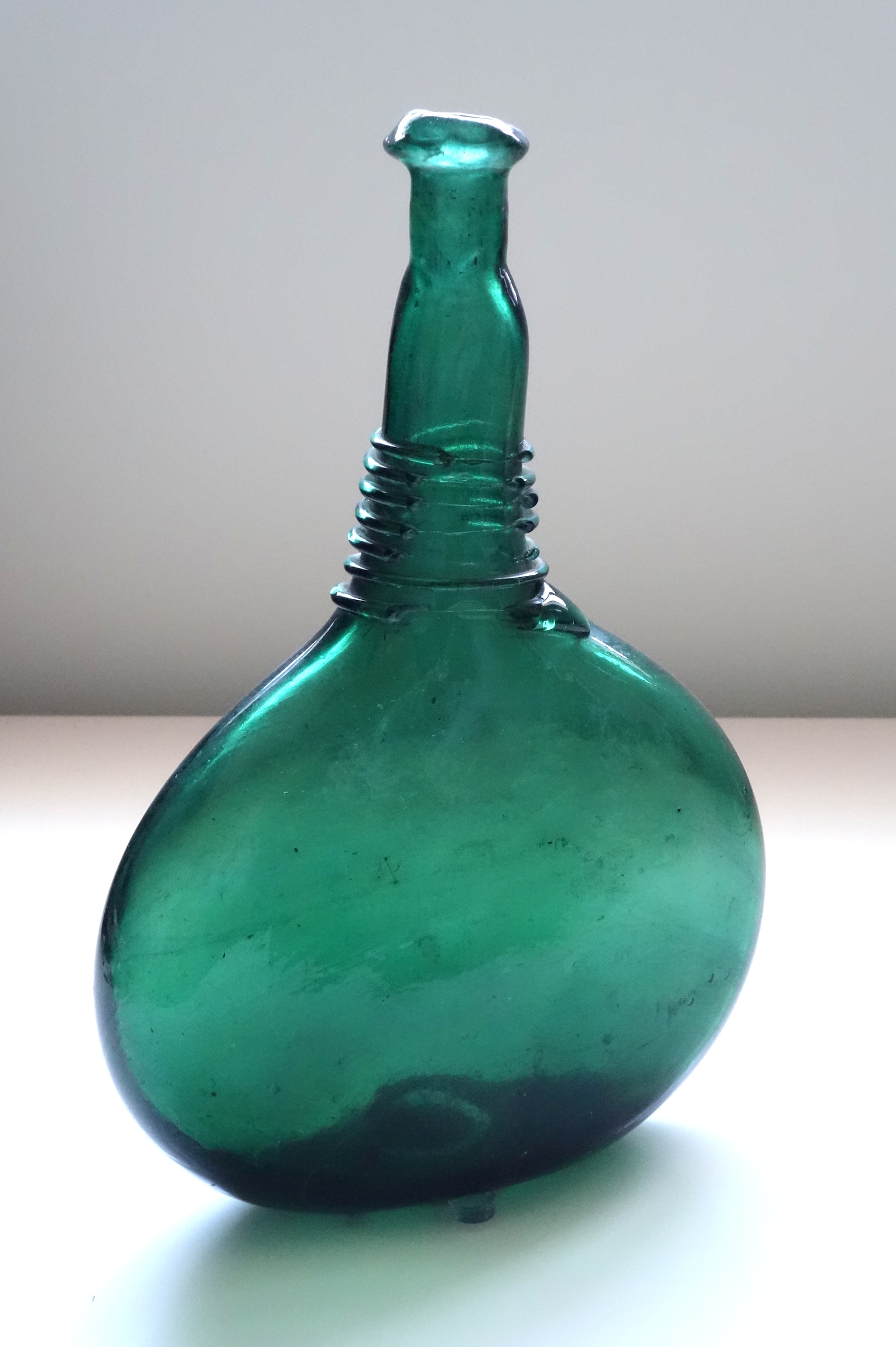
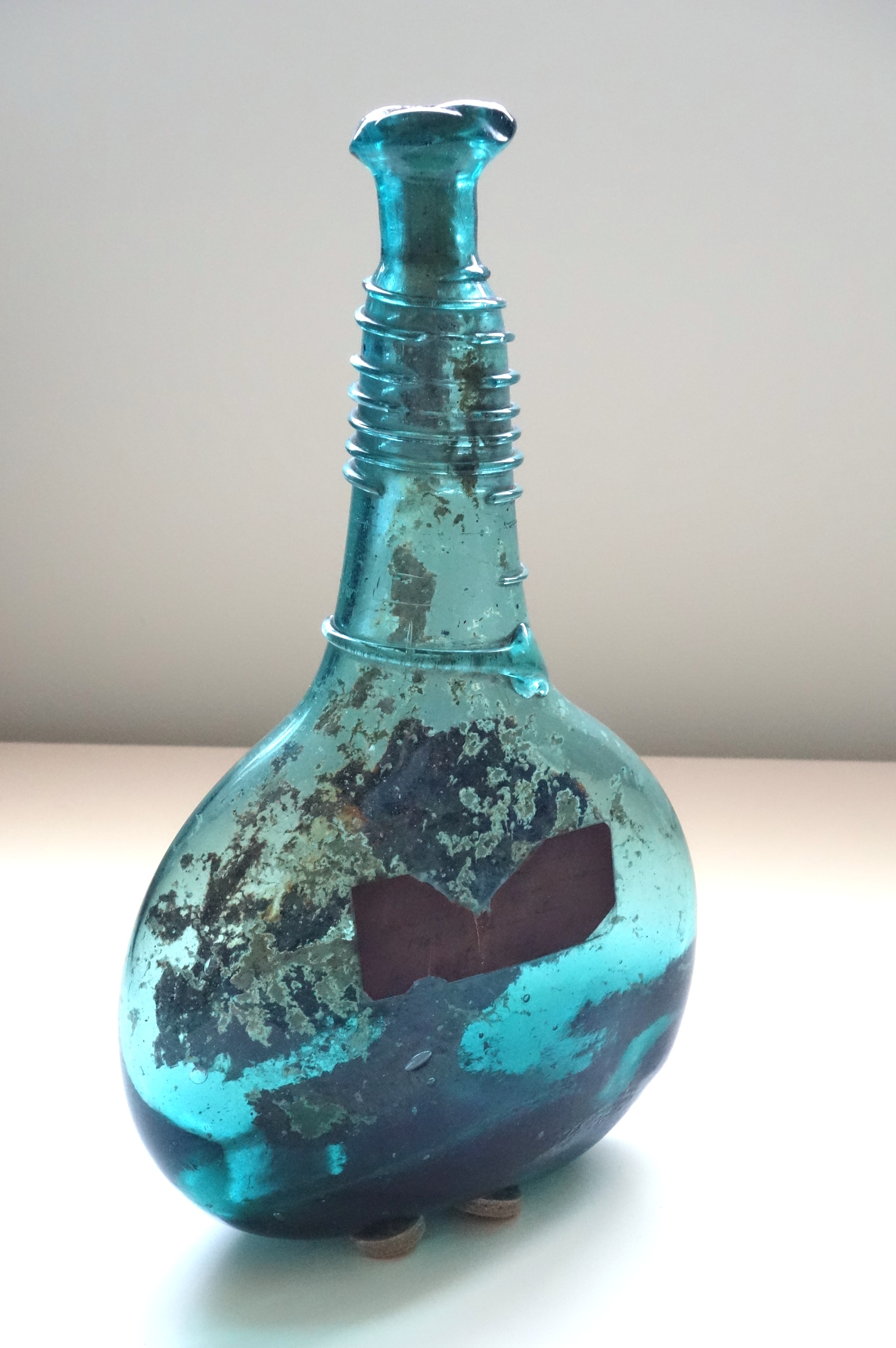

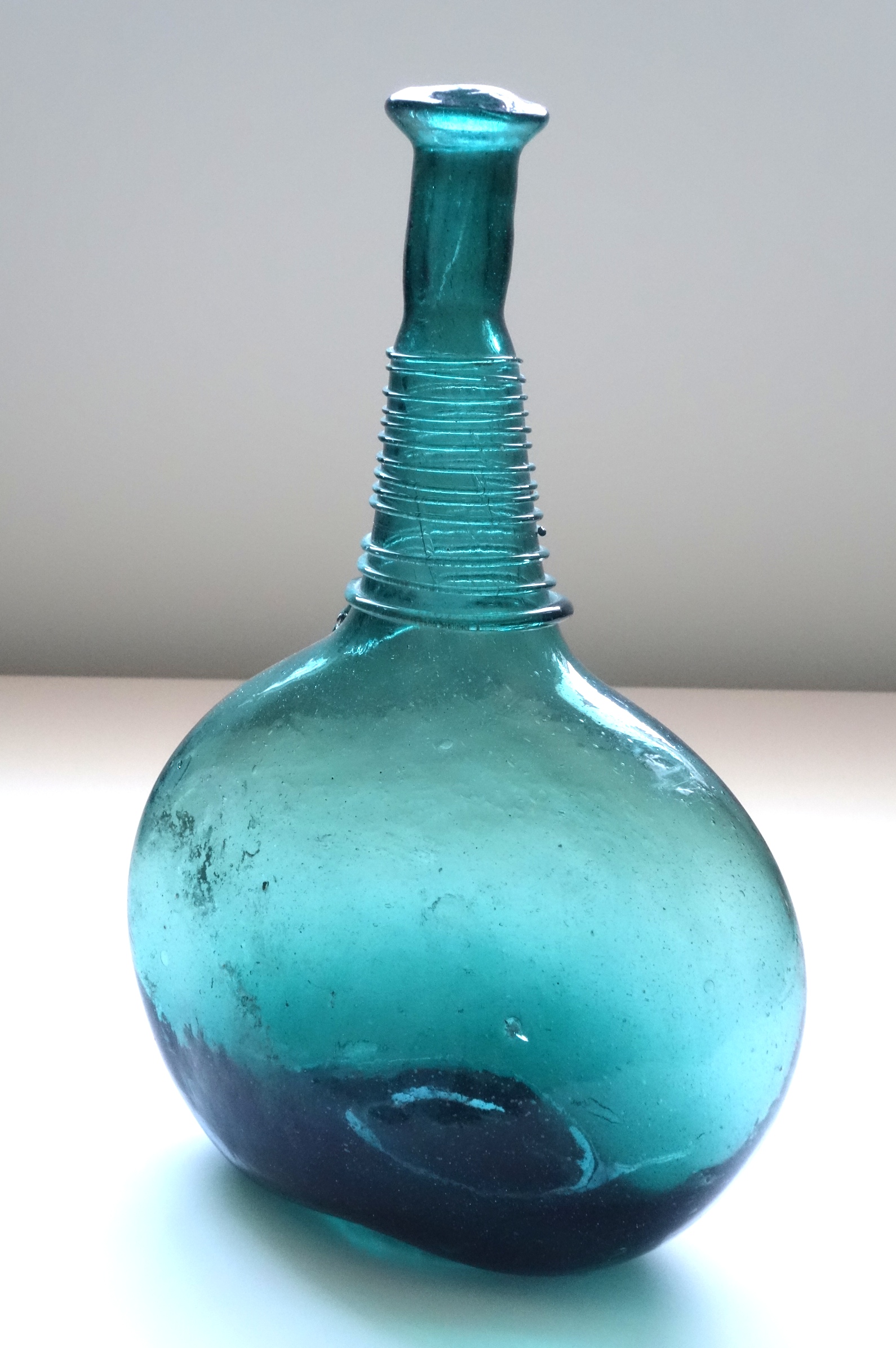
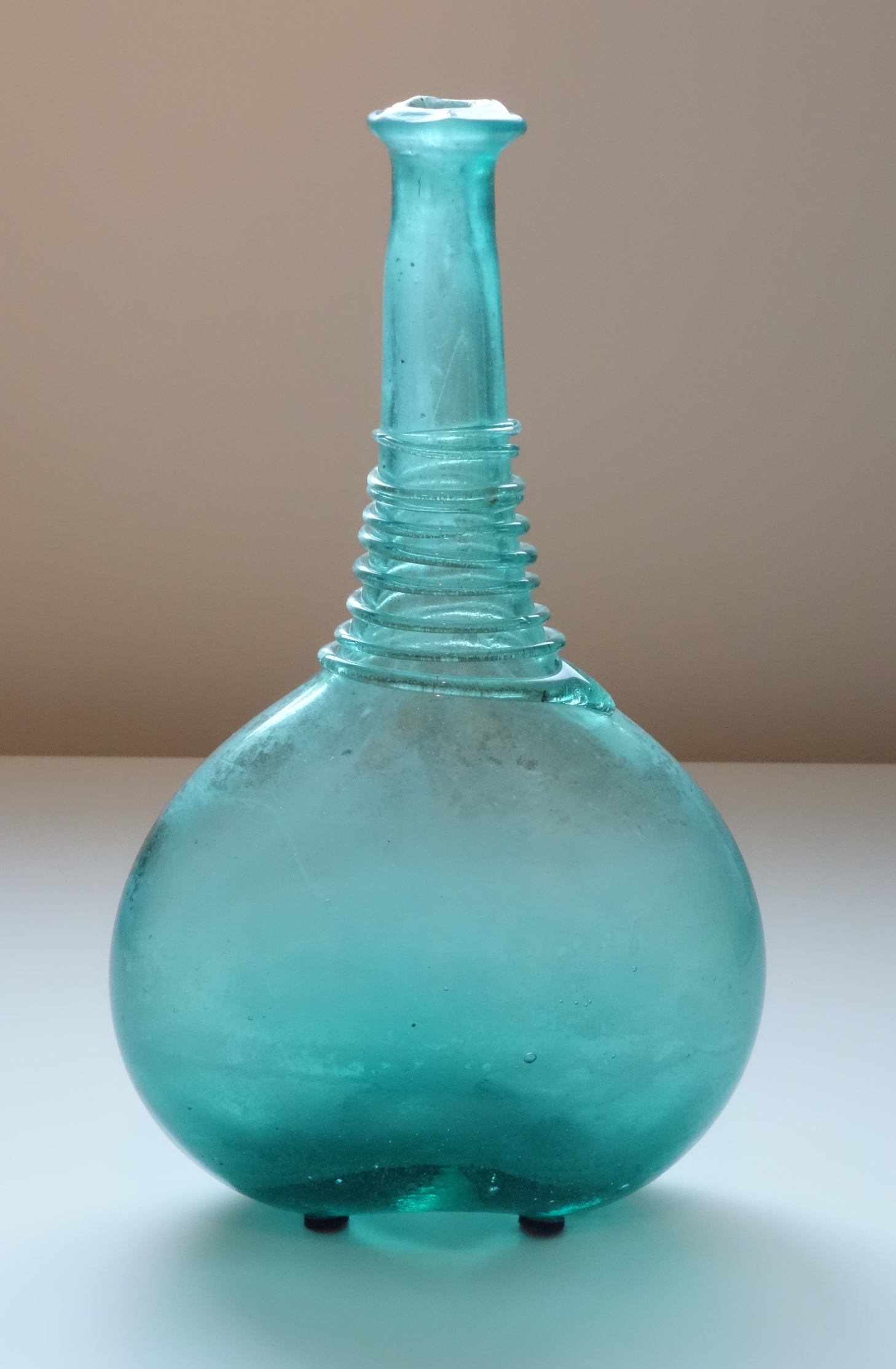
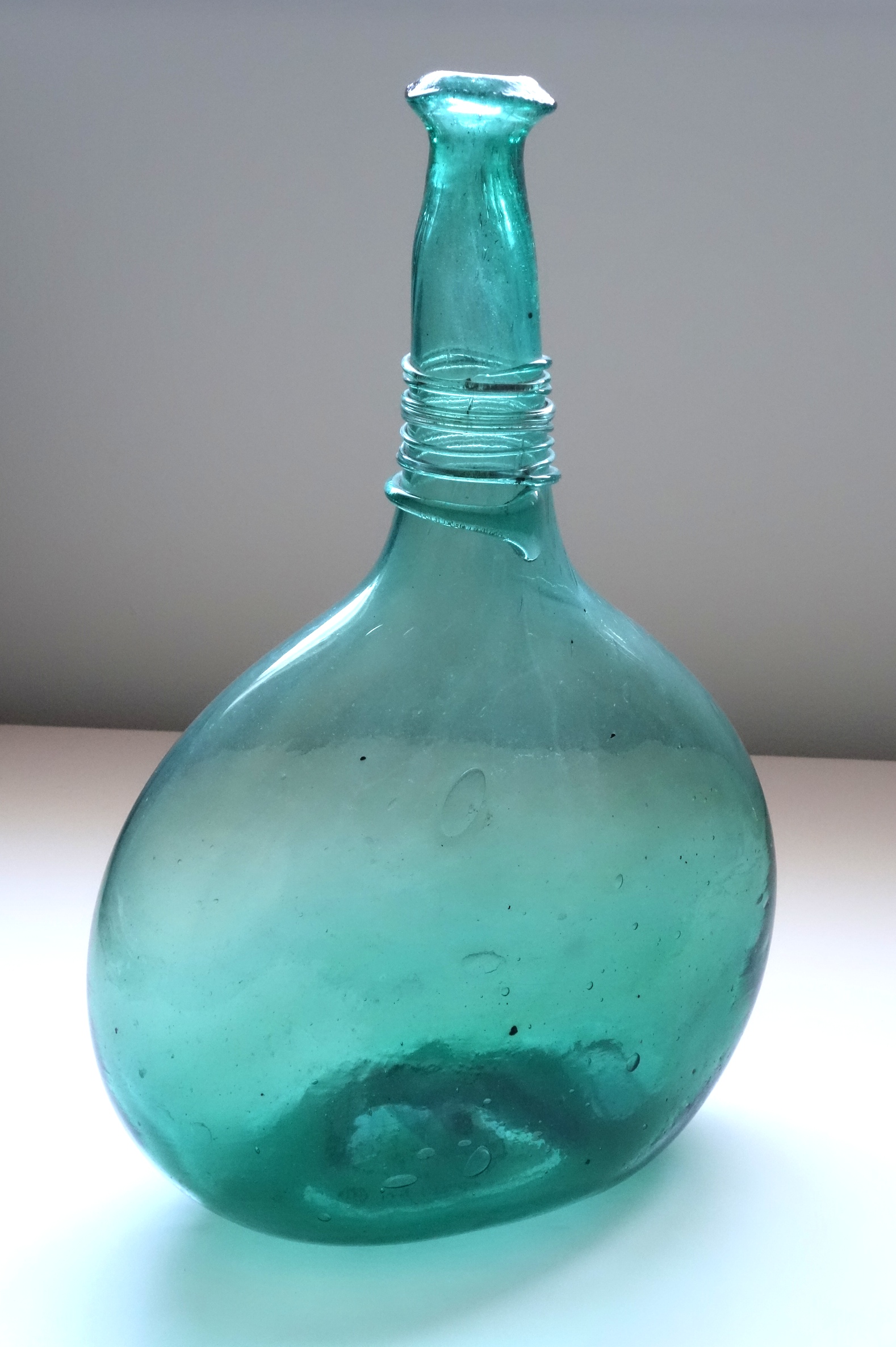















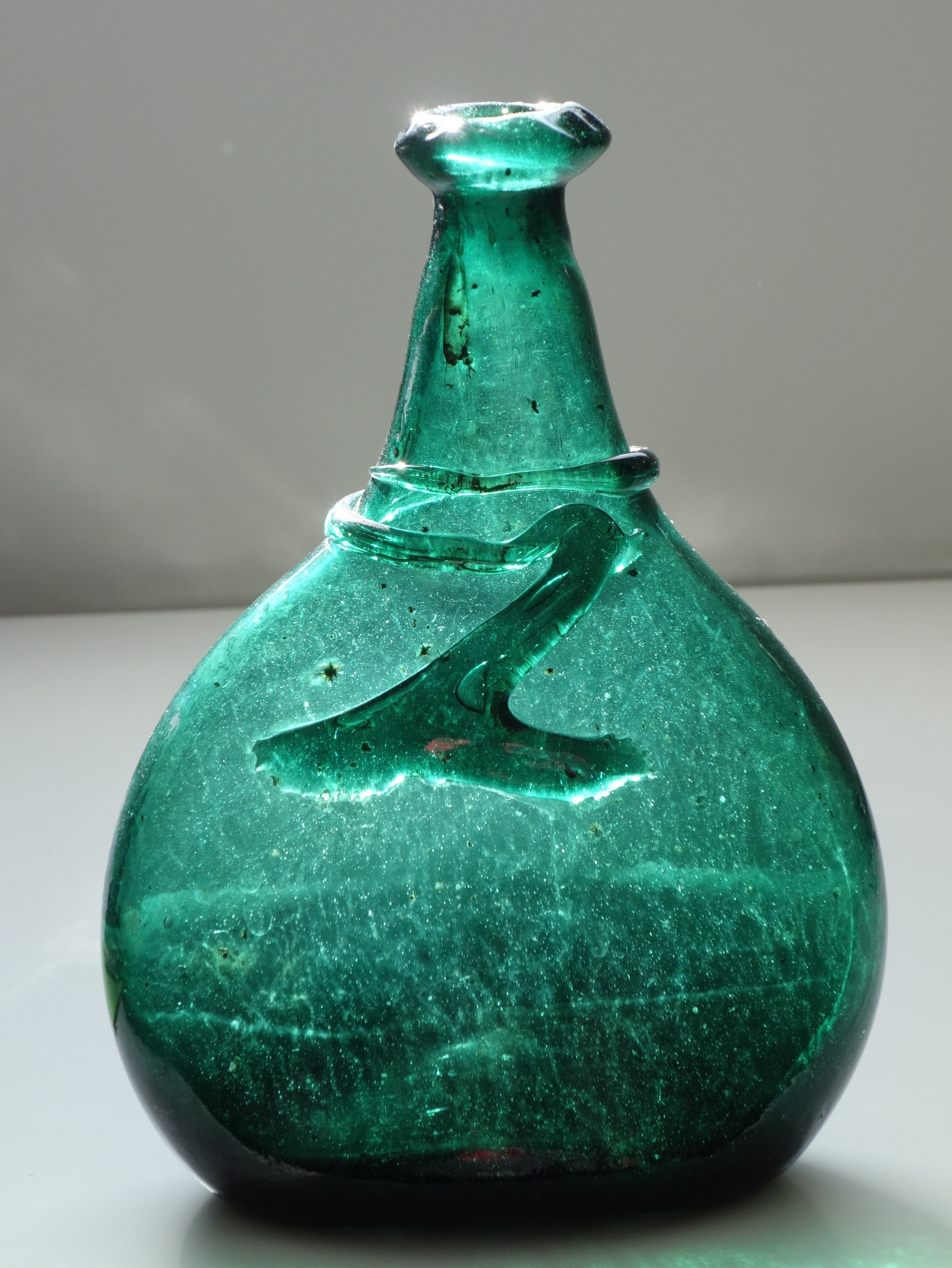
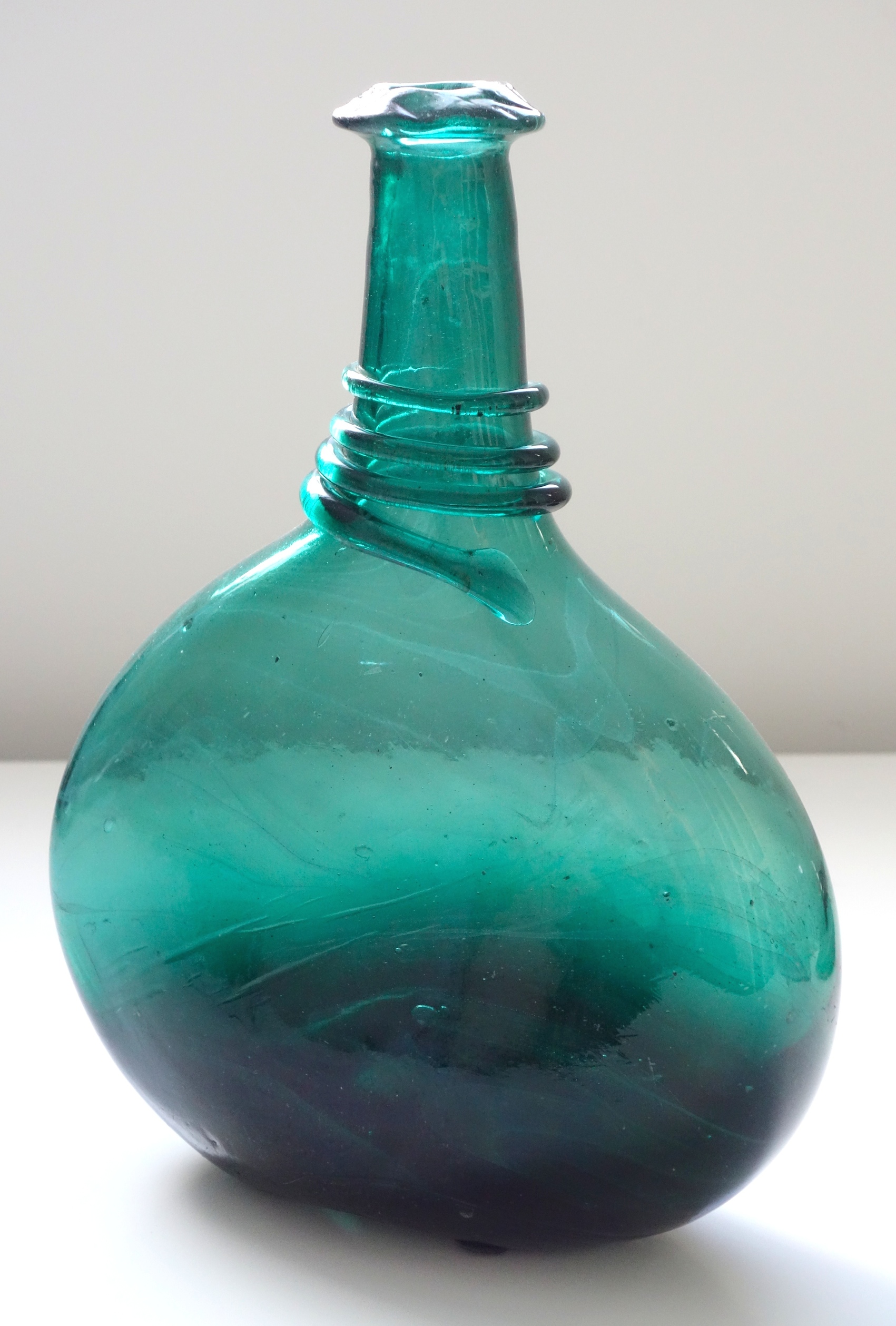
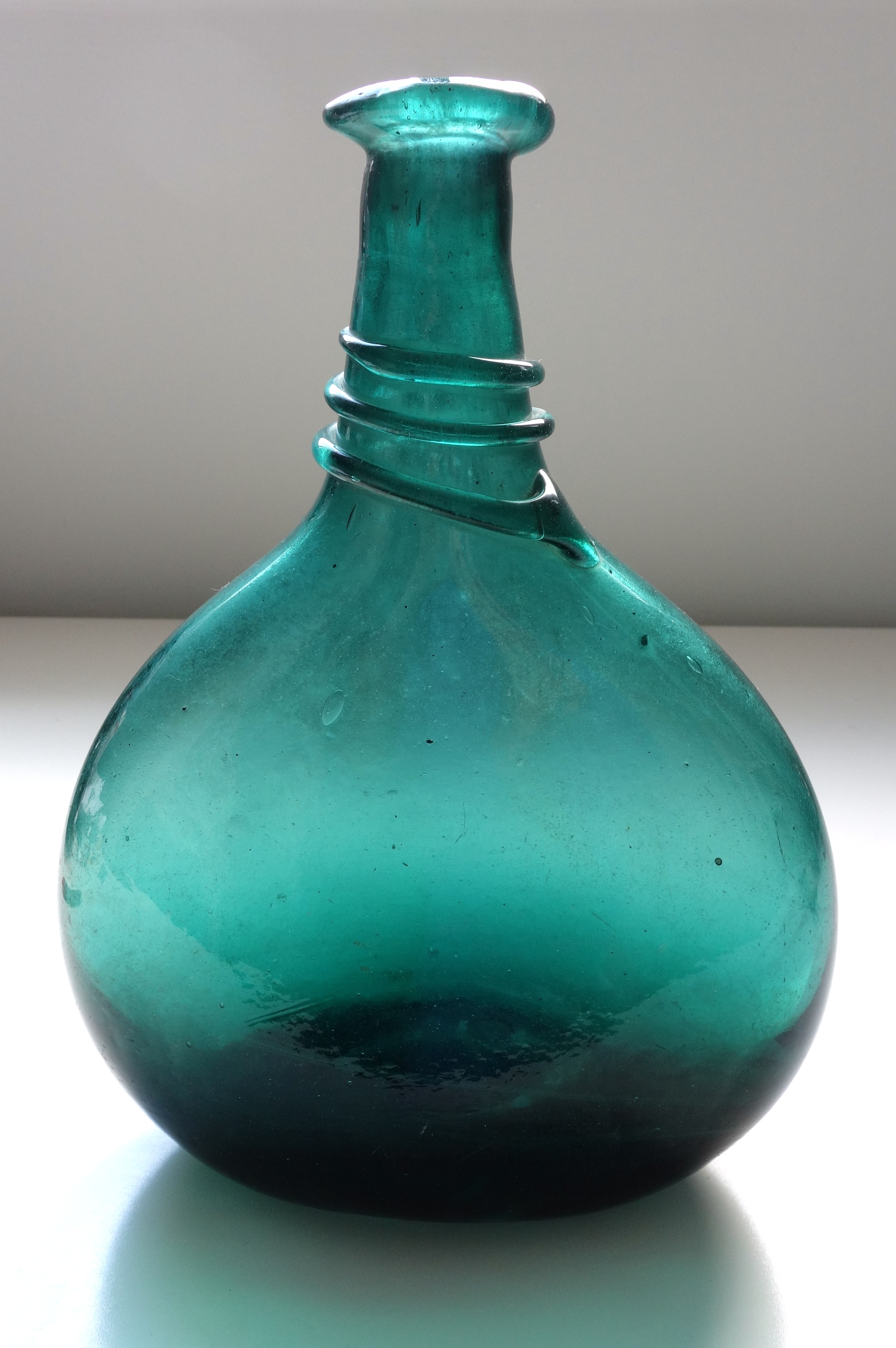
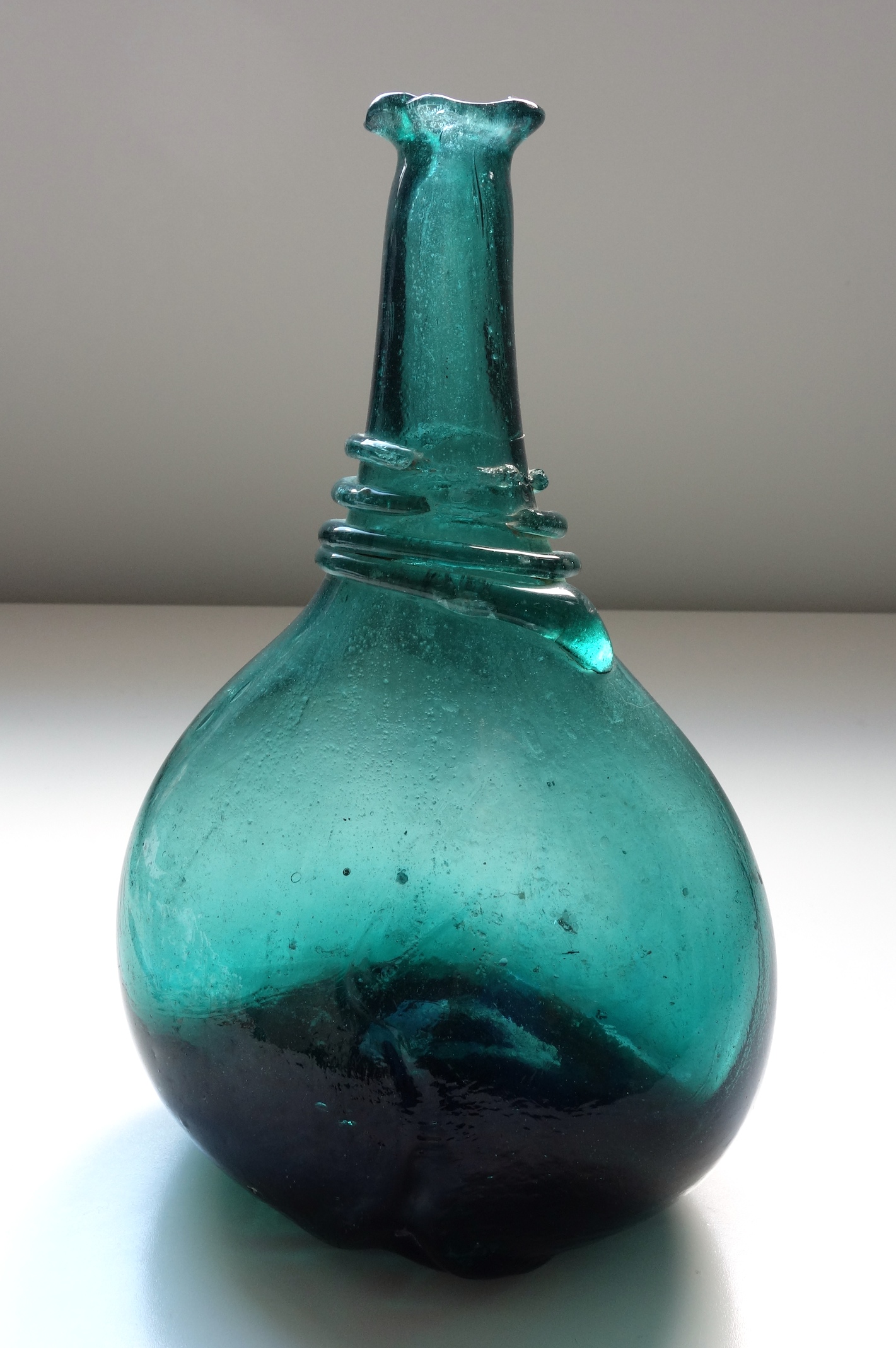






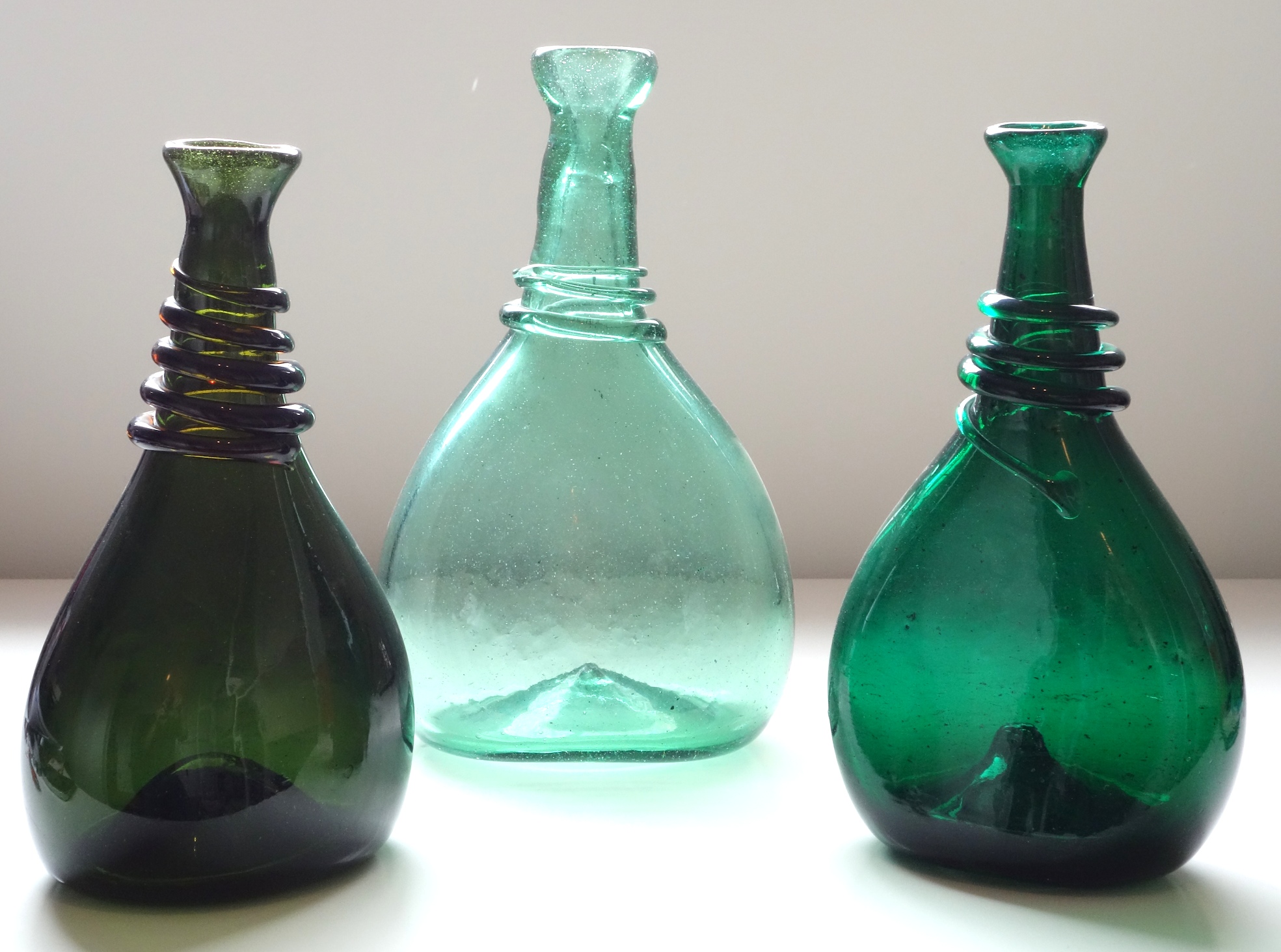
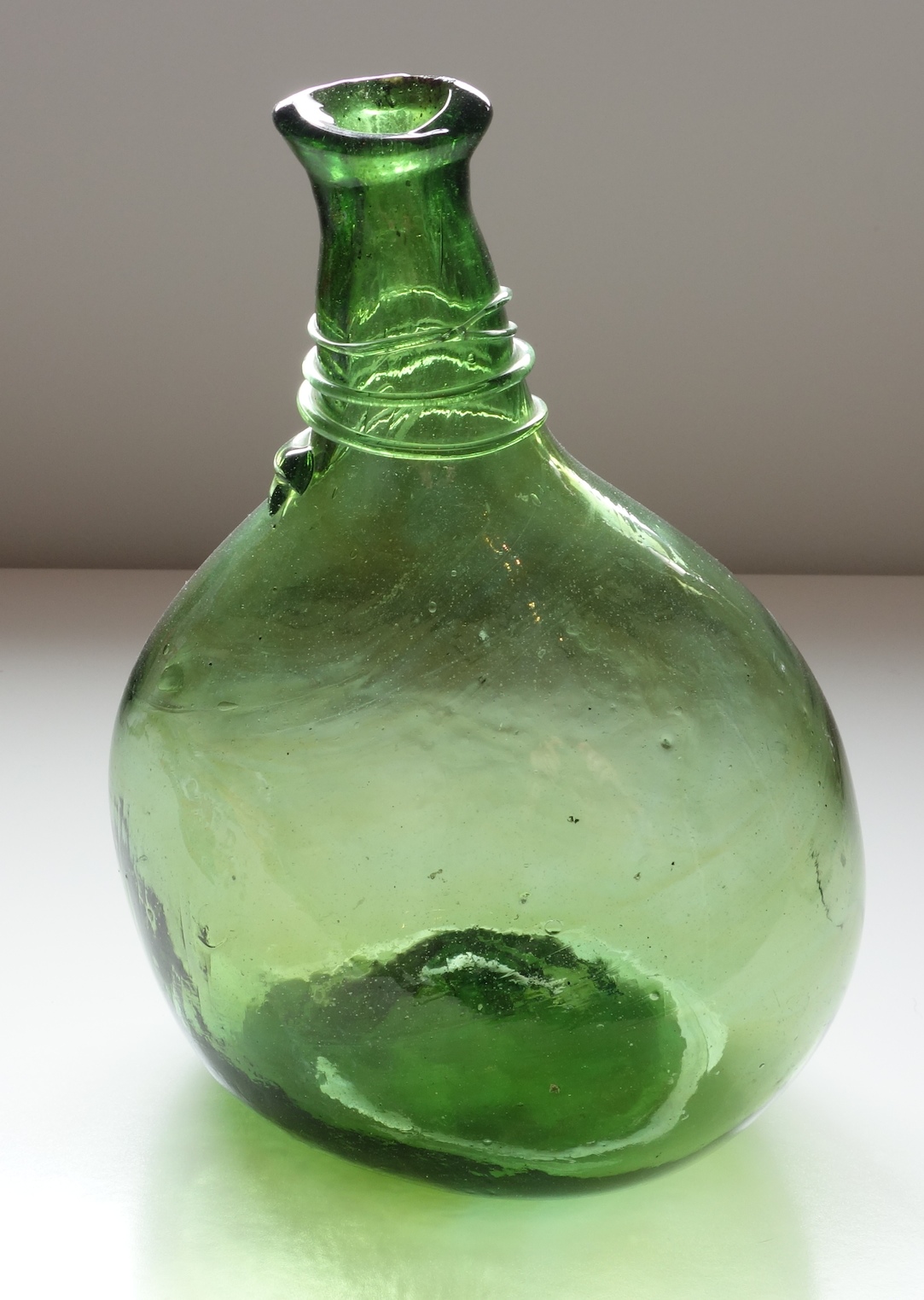
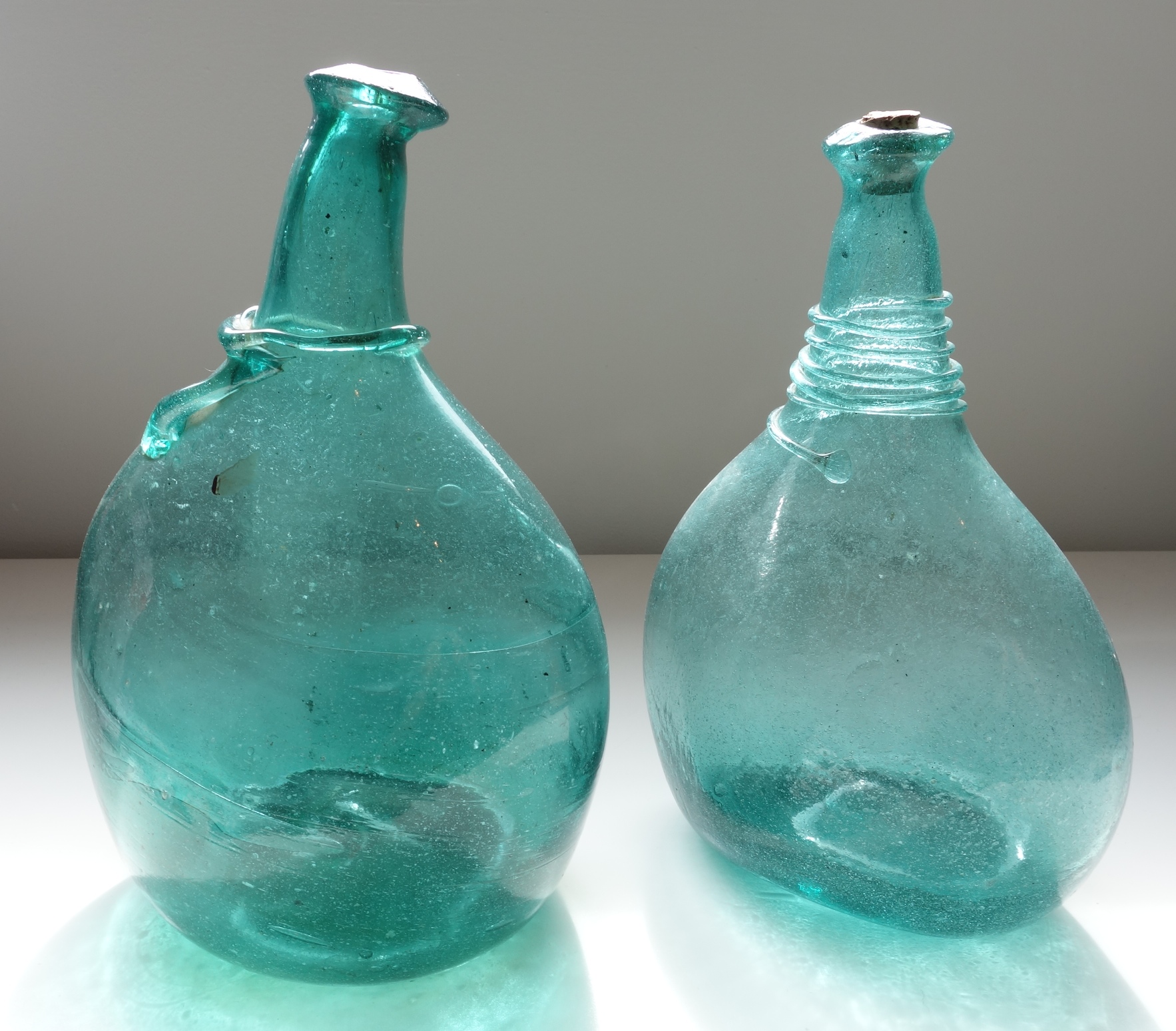
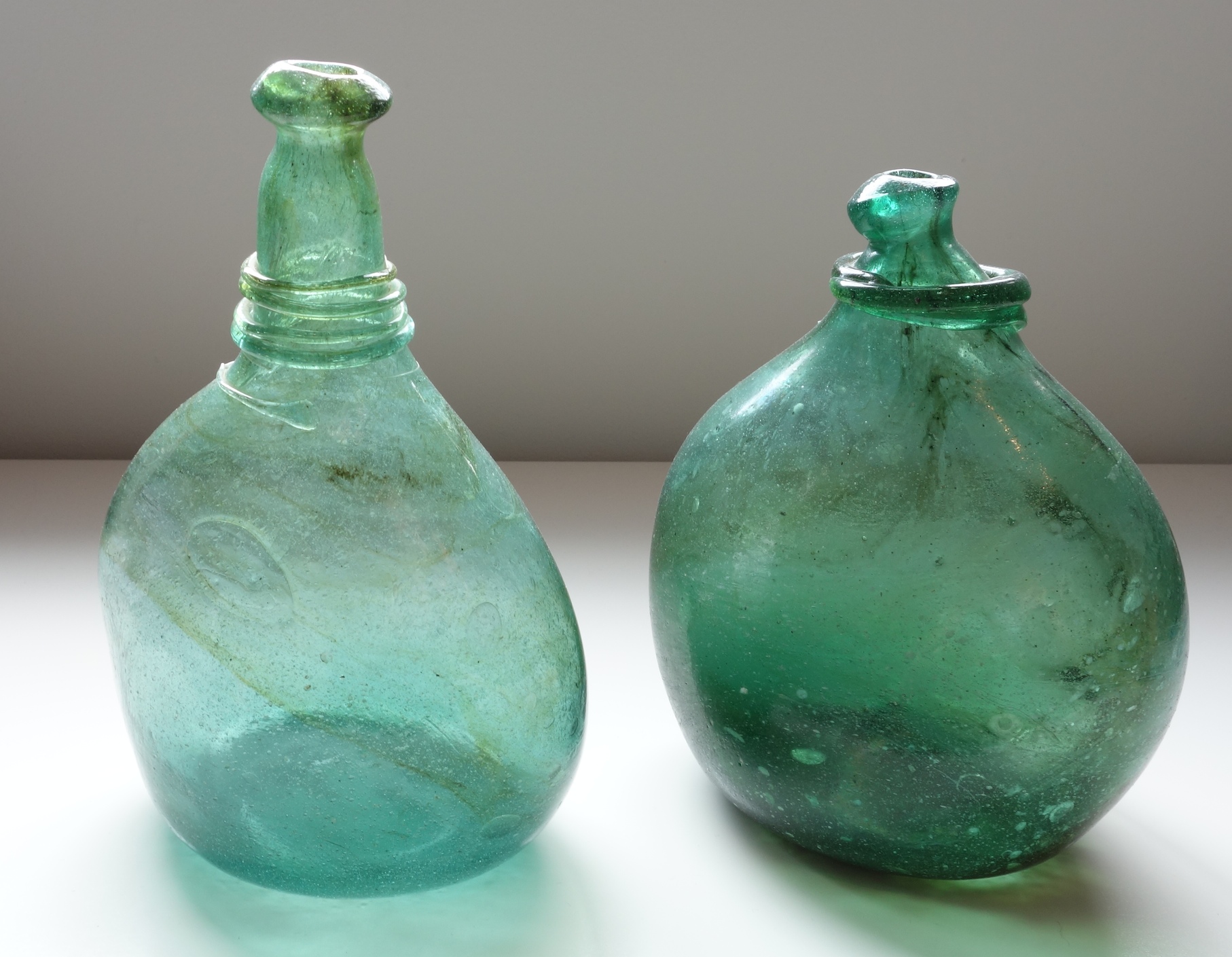
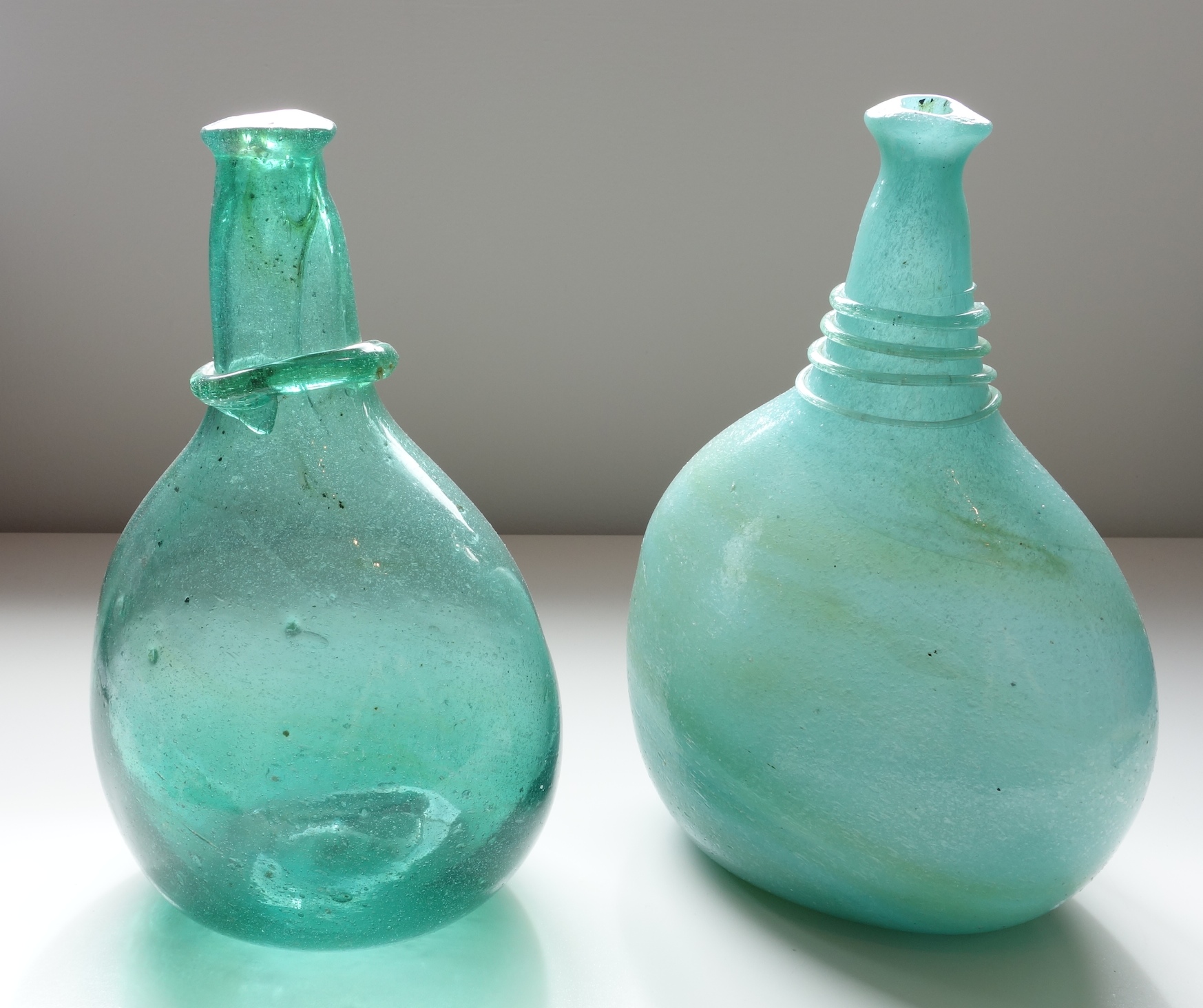
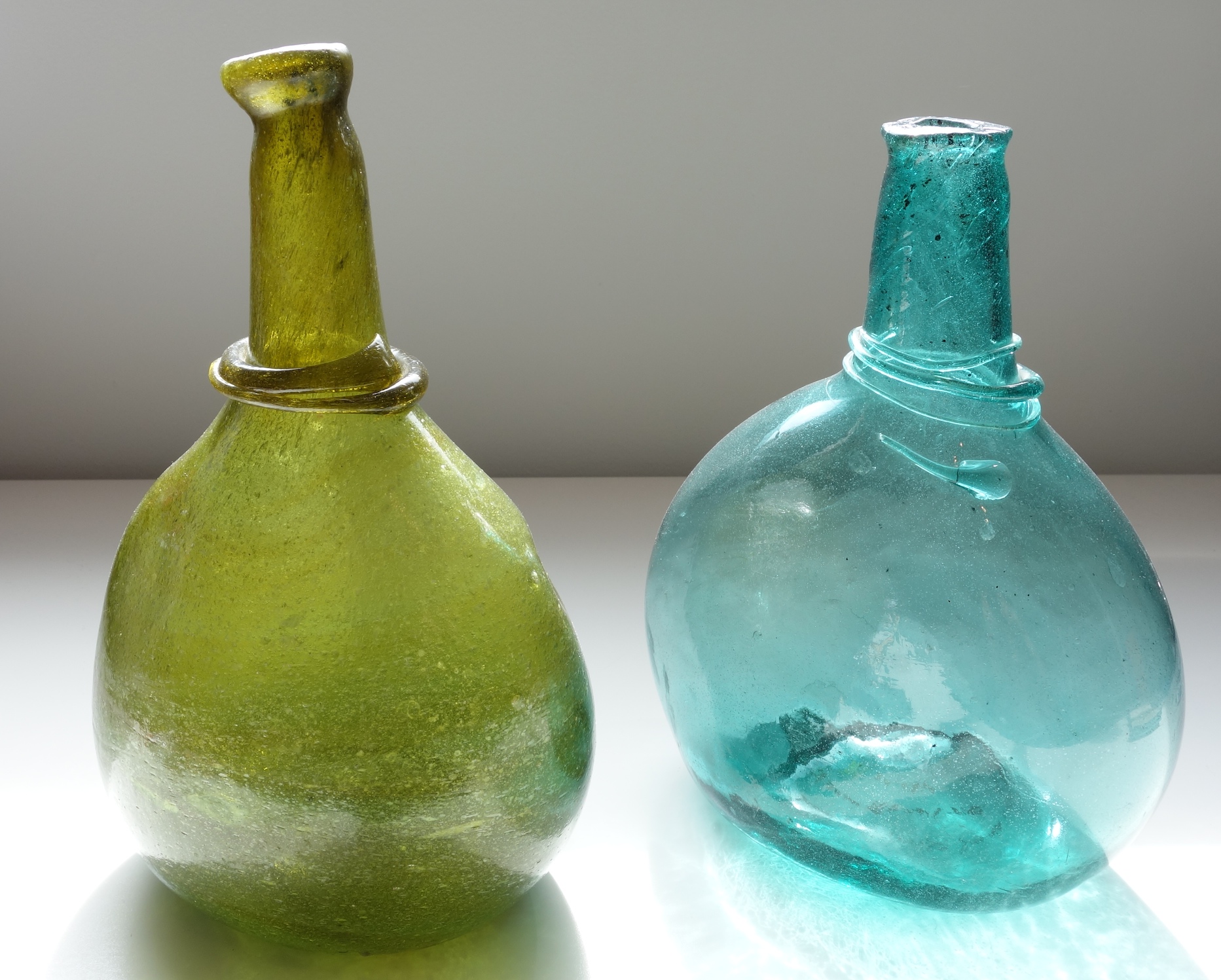
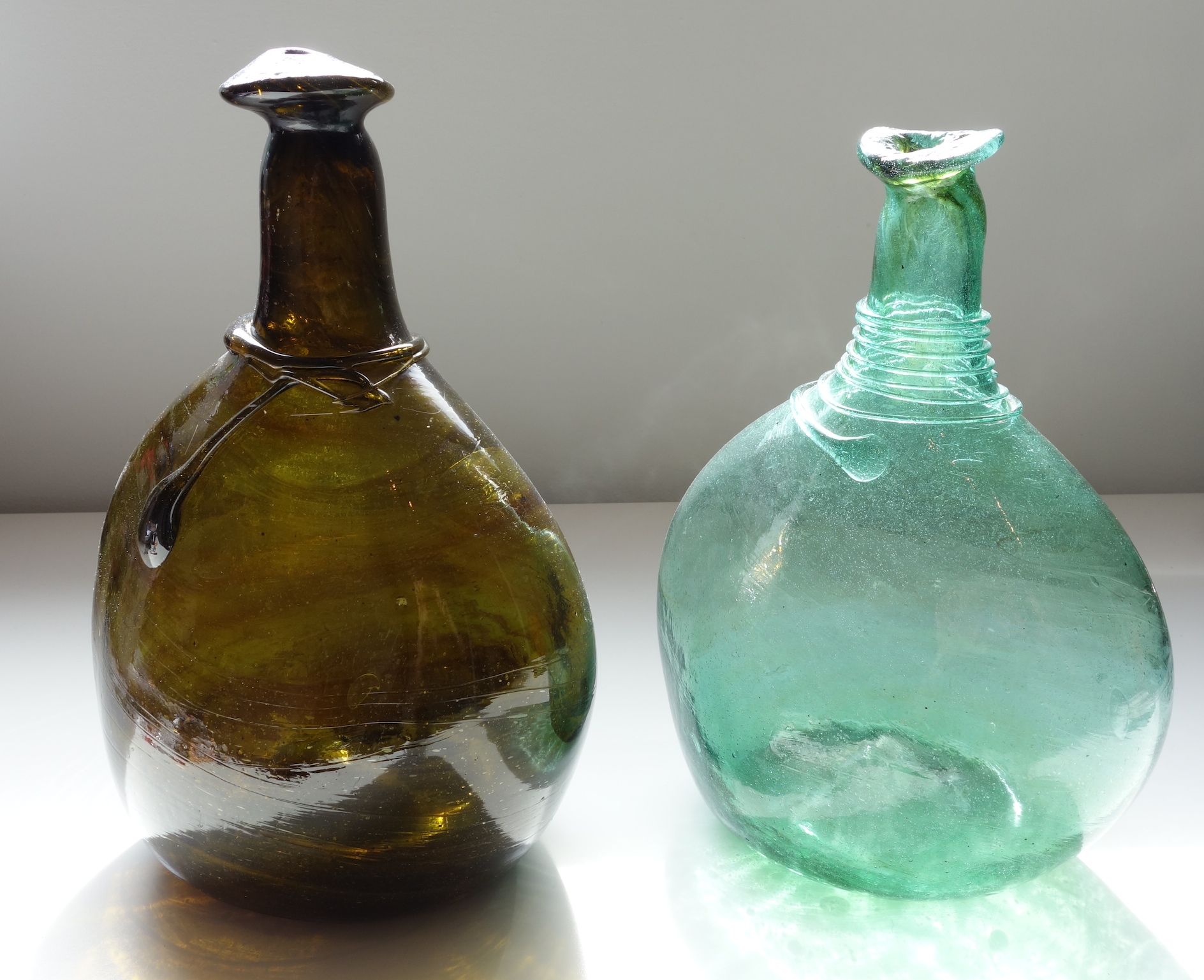
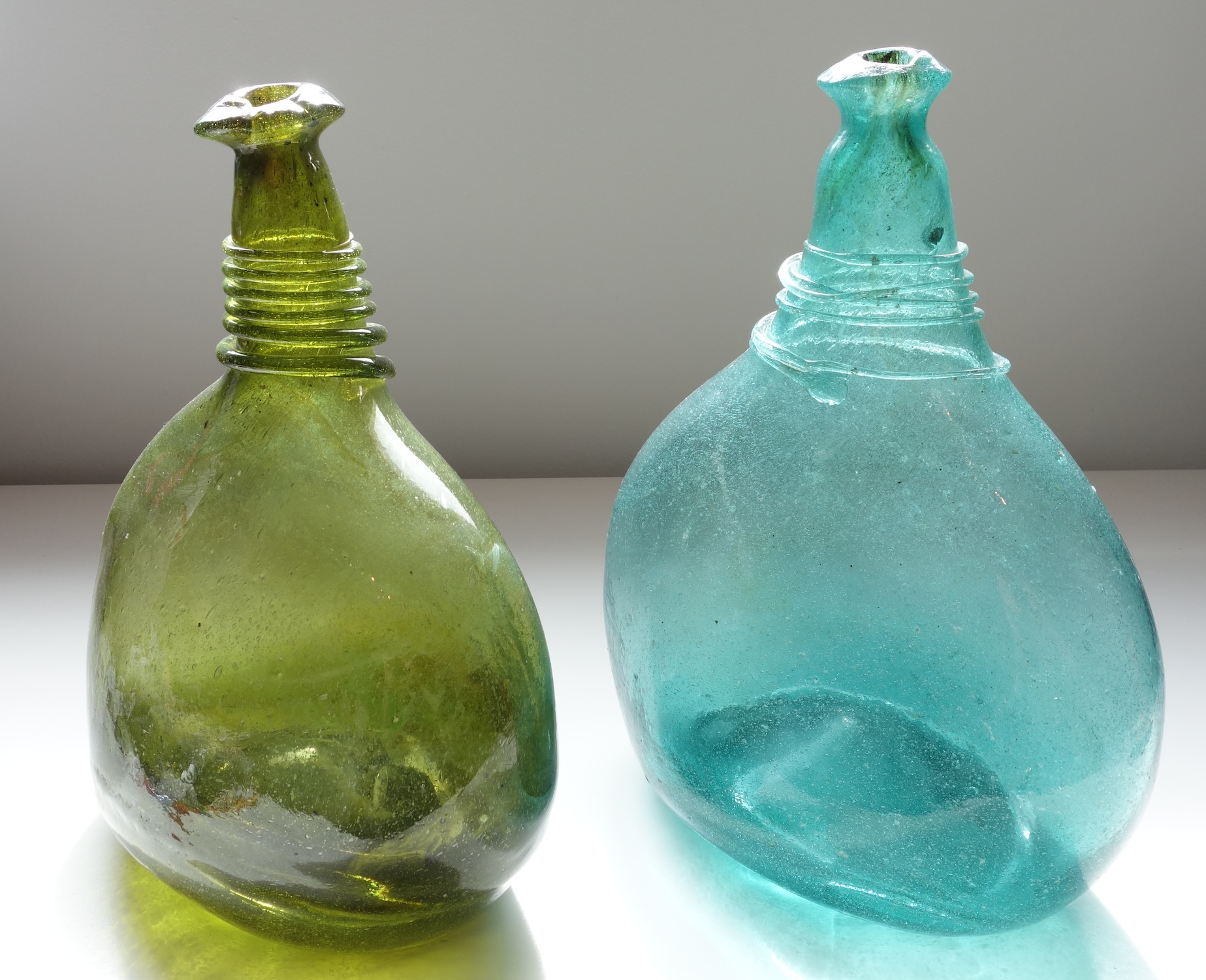
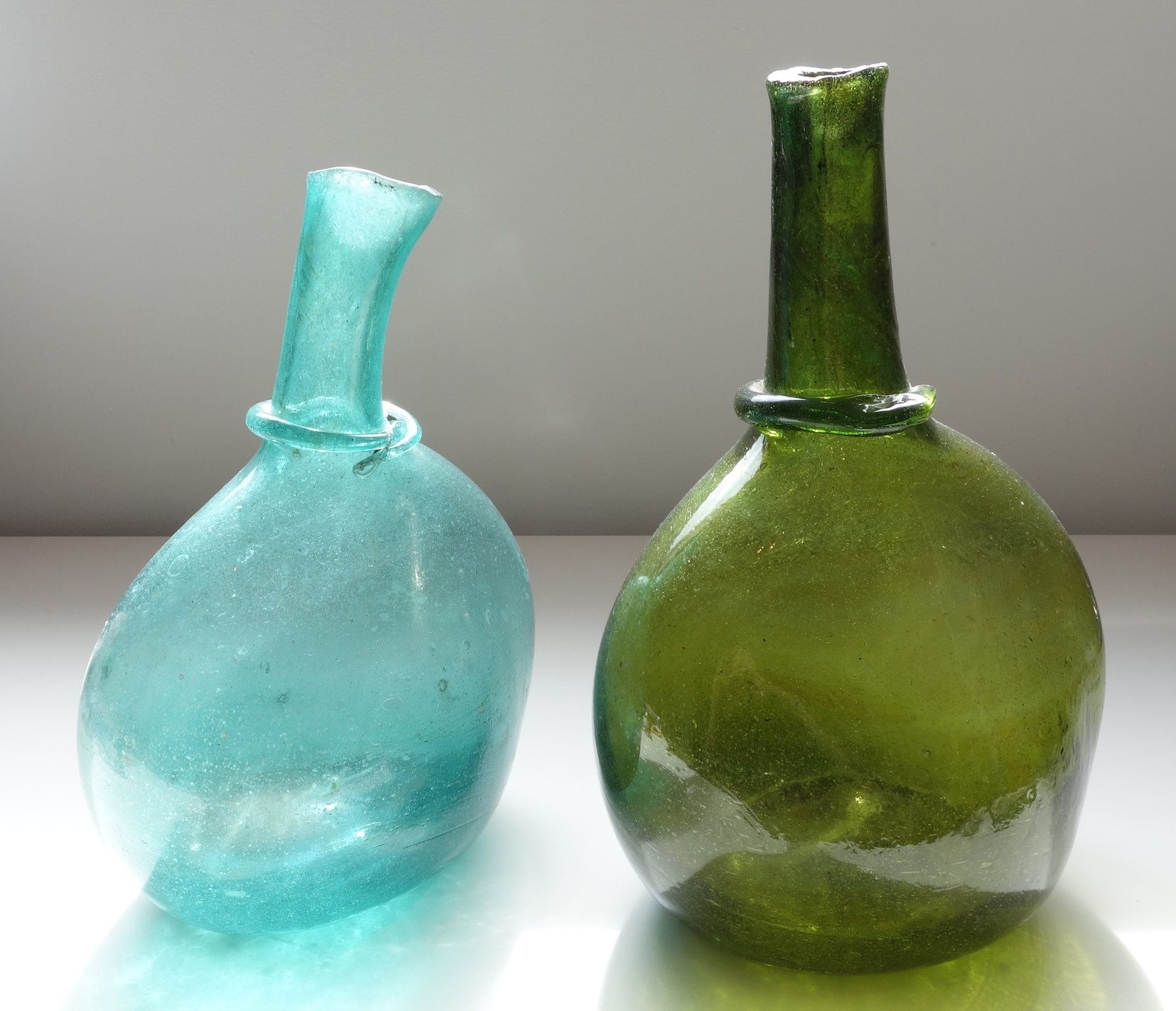
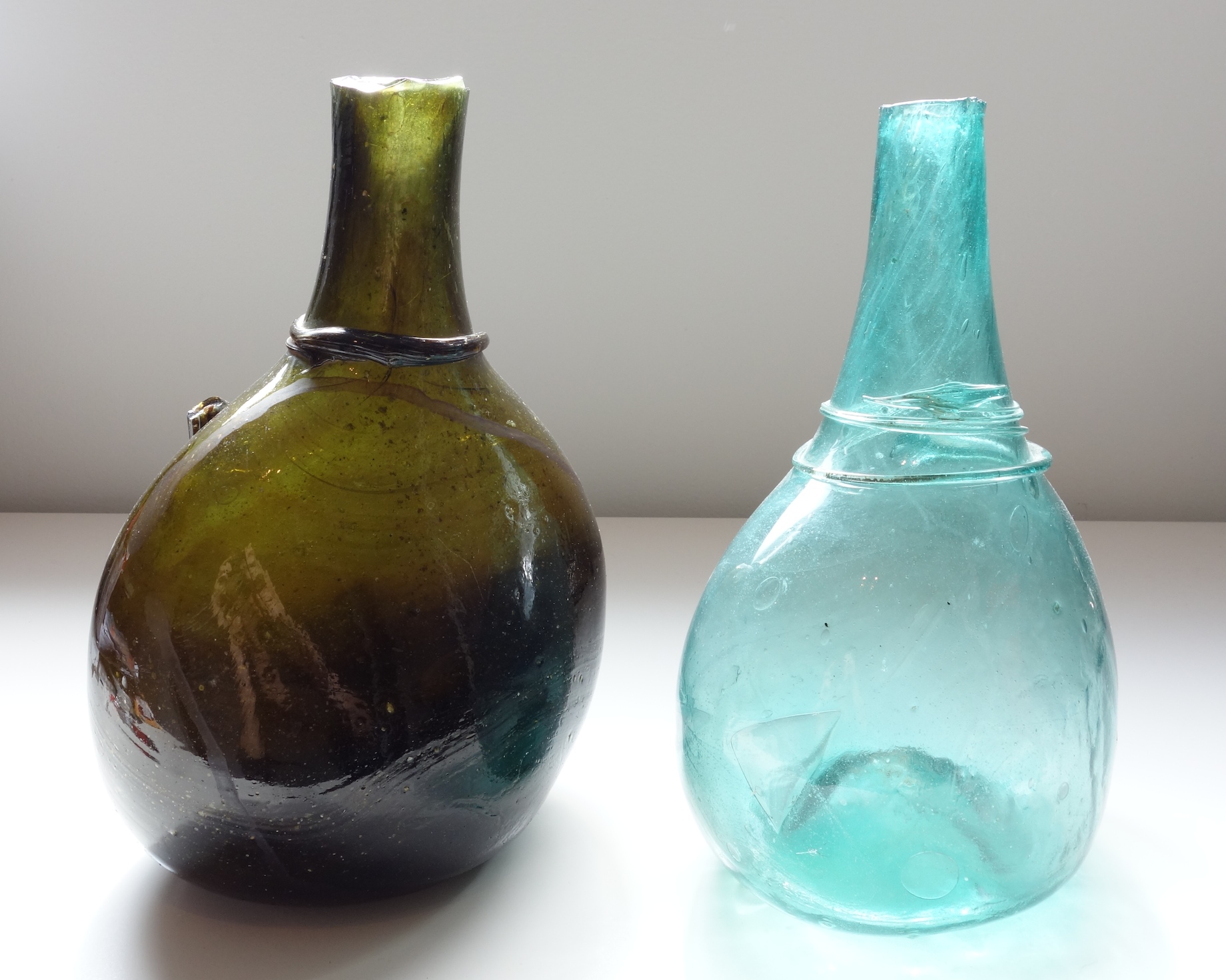








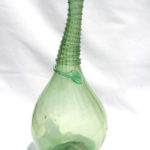
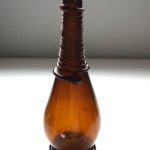
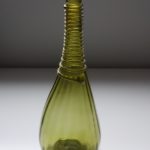
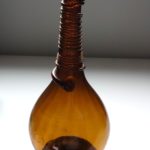
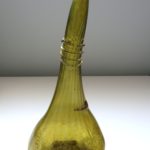
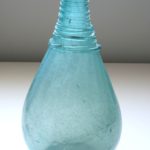
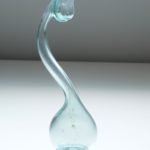
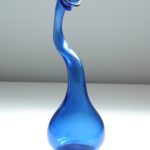
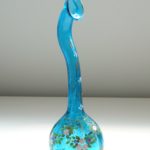
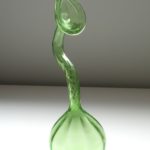
I have a good collection of antique persian glass. My husband worked as a restorer on the monuments in Isfahan, for ISMEO, in the 1970s and fell in love with the glass, which as an art expert he was able to distinguish between antique and new. I have photographed it and in the next days will be putting it on a new website of my own. I have found this site very usefully in identifying many of the pieces and I thank you. Unfortunately, economical conditions, old age, and two daughters who frankly state that “when you and Dad are no longer here, we’ll just get rid of everything (I have a lot of antiques), has pushed me to open un a website at least to identify everything for my daughters, give it a value, and sell what I can, without underselling my wonderful collections.
I thought you might be interested in seeing some of these photographs. I do have some kinds of glass that I can’t find on your pages. If you send my your regular email, I will send some photos.
Thank you again for this wonderful website. Suzanne
About 35 years ago, as a student I found in an antique shop in Würzburg a so called Sattelflasche. The owner told me that he had some others from the orient covered with straw. He put away the straw and some were broken and somt not. Inside he found rests of fruits. So my bottle was extrem expensive for a student. But I bought one of them.
The first other peace I found was in the Pinakothek der Moderne in Munich. Last year I found some in ebay. I often looked for them in the internet and today I found your article. Thanks a lot. My bottle is a typicall type III. I am so happy to learn something about this wonderfull form and colour of glass.
You are very welcome Heike. Although they are less common than some people think, they are misunderstood and therefore there is very low demand for them…so you will probably have continuing success if you continue to look. Feel free to send along photos of anything you find!
Hi Phil glad I dug around the Internet and found you (FOHB site), as there are not many Persian saddle flask resources out there. I have what appears to be an extremely old green Persian saddle flask with a crazy pontil mark unlike any I’ve seen in form and depth, with original mud still in it. I also have just acquired an amber saddle flask similar to some on your site. I’m hoping to get some info on these flasks and add them to your upcoming publication if possible. They seem genuine as heck, but I can’t send photos on here so can I send them through email? Thanks Phil, sincerely
Francisco Silva
fs17fs@gmail.com
Delighted to have added the beautiful amber saddle to the reference collection!